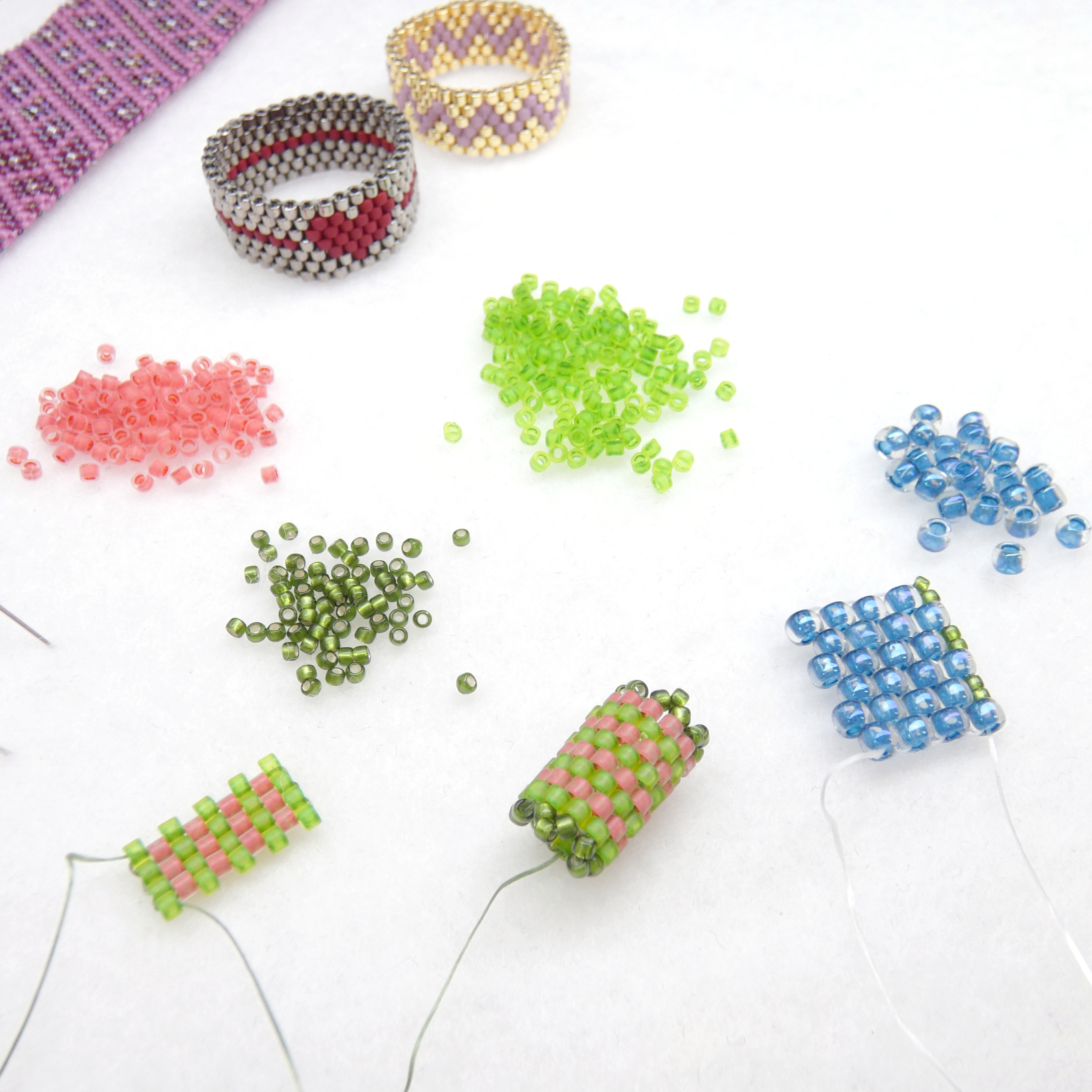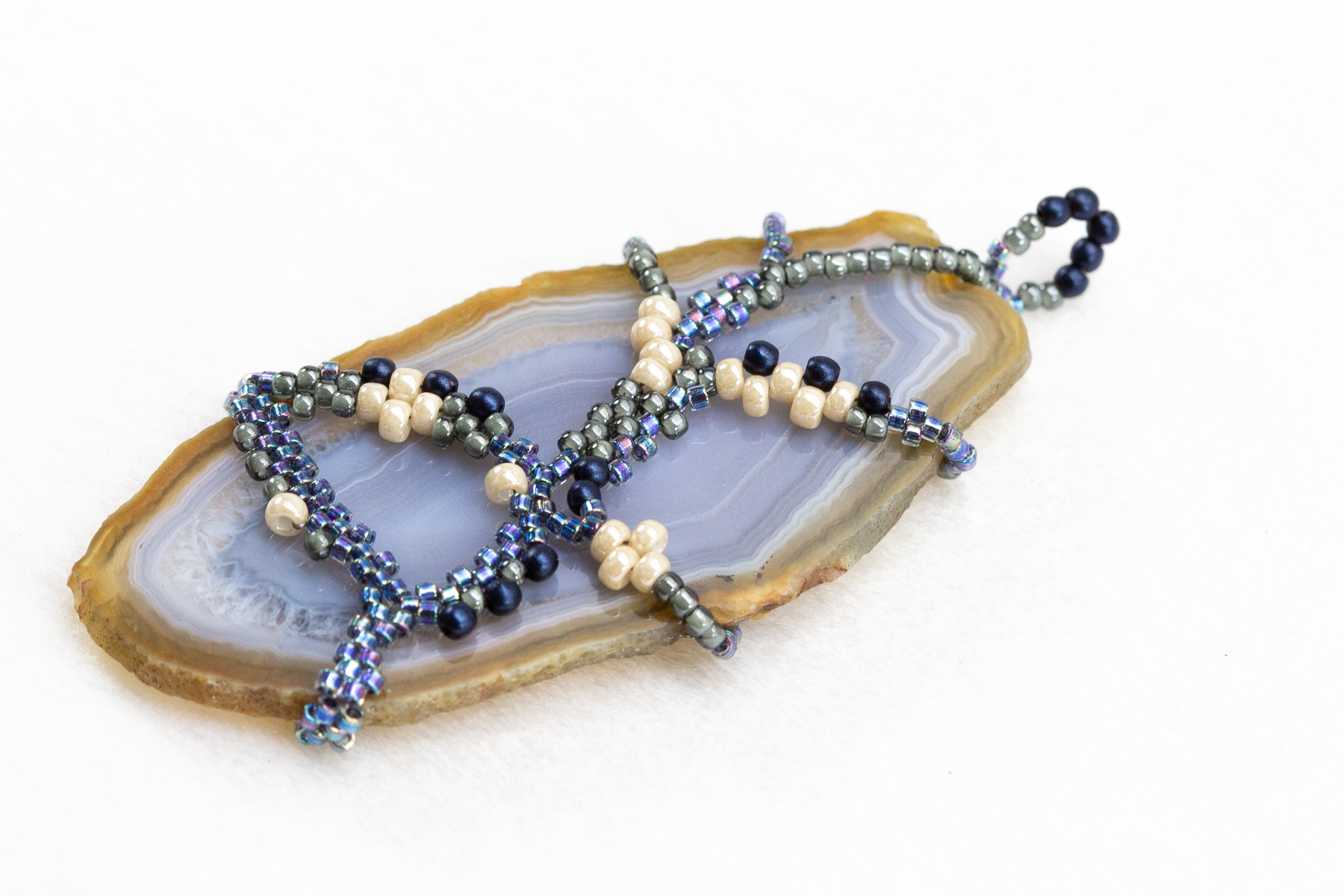The Beginner’s Guide to Peyote Beading Stitch
Learn one of the most fundamental stitches for beadweaving in this easy guide for beginning beaders!
What is Peyote Stitch?
Peyote beading stitch is a basic beading stitch, it usually comes in a flat form but not always. It is super versatile, can be used with many types of beads to create a huge variety of different effects and styles and it combines easily with other common stitches and techniques such as herringbone, brick stitch, netting, square stitch and countless embellishments like picot. Peyote is a foundational stitch that all aspiring beadweavers should become intimately familiar with.
Background About the Peyote Stitch
Another name for the peyote stitch is gourd stitch and both of these names come to us from Native American traditional culture. These bead stitching techniques have been used in both sacred and spiritual practices as well as for everyday aesthetic and decorative purposes for generations. The stitch itself has been found all over the world and has been used by many different cultures and it’s a neat example of something that was independently discovered by people all over the world that had no contact with each other.
- How To Make Stunning Jewelry At Home: A Comprehensive Guide for Beginners
- How to Make a Zig Zag Beaded Ring Using Even Count Peyote Stitch
- Beads for Jewelry Making: A Comprehensive Guide
What are the Different Styles of Peyote Stitch?
One Drop Peyote Stitch vs Two Drop Peyote Stitch
In technical terms, the peyote stitch stands out as one of the most straightforward bead weaving techniques out there. The process involves picking up one bead, skipping the next, stitching through the subsequent one, and repeating the sequence. In one drop peyote stitch you weave in one bead at a time into the stitch. Whereas in two or three drop peyote stitch you weave in two or three beads at a time. The “drop” refers to how many beads you are “dropping” into the stitch at a time.
Odd Count vs Even Count Peyote Stitch
The count of the peyote stitch refers to how many beads are in a single row of beading and whether that is an even number of beads or an odd number of beads. For example, a flat stitched bracelet that is 7 beads across would be an odd count versus one that is 6 beads across which would make it an even count. Even count peyote stitch is much easier to do than odd count, however you might choose to do an odd count if your design requires a central bead to for example create contrast with a different color stripe in the middle of the bracelet or if you are creating symmetrical designs. Odd count peyote is more challenging than even count because it requires an extra step when you turn your thread around to start your next row on one side of your beadwork. So beginners should start with even count peyote stitch before attempting the odd count.
What kinds of Peyote Stitch are there?
What is tubular peyote stitch?
With tubular peyote stitch, you start off at the bottom of a tube and work your way up to create a hollow tube which can be then made into a bracelet or necklace or even put around a pen or pencil for a cute decorative touch!
What is freeform peyote stitch?
Freeform peyote stitch is a technique of beading without any specific plan or structure. It usually involves using various sizes, shapes and types of beads at a time and results in unique and unusual designs, often with a very organic look.
What are the best beads to use for peyote stitch?
If you put your mind to it, you can use just about any beads for peyote stitch but there are definitely beads that are easier to use in this stitch than others. For beginners it’s best to start with using seed beads and even though you can peyote stitch with round beads and bugle beads, the easiest to use would be to pick cylindrical beads because they are shaped like tiny little bricks so they easily lock into place together and create not only a beautiful but also a satisfying look. Types of cylindrical seed beads are Miyuki Delicas, Toho Treasures and the most top of the line in uniformity, Toho Aiko beads. For absolute beginners, it's always a good idea to start with bigger beads to get a better sense of what you're doing before moving to the really tiny ones.
What’s the best thread to use for peyote stitch?
The best thread for peyote stitch beaded projects will depend on the effect that you are going for in your beaded jewelry. If you want a stiff piece that will not flop around, the best beading thread to use would be Fireline which is made of polyethylene, one of the strongest fibers ever made, it knots easily and does not stretch. This would be a good thread for creating a flat beaded earring or charms that keeps their shape. However, if you are looking to create a bracelet for example that is flowy and supple, try using a nylon thread like Nymo, One-G or KO thread.
What can you make with peyote stitch?
Peyote stitch is an extremely versatile stitch, mastering it will allow you to easily make lots of different kinds of beaded jewelry such as bracelets, earrings, charms, pendants, bails, bezels, toggle clasps and even rings!
Want to learn more about peyote stitch and see a demo? Check out our YouTube video on the subject and then give it a try with a super easy project like one of our peyote stitch rings!













